Design Thinking: A Manual for Innovation
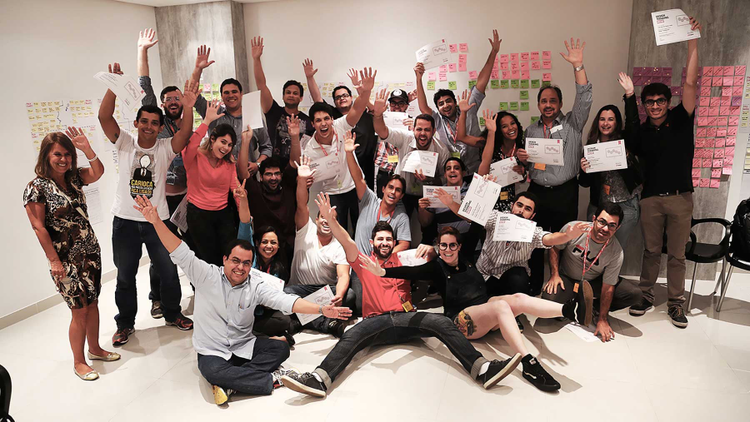
What if there were a formula to create innovative products, experiences or services? I’m not talking about incremental improvements; I’m talking about disruptive innovation.
If you’re skeptical that’s understandable, I was when I began my research on the science behind innovation many years ago. The truth about innovation is that it’s all about people. At the end of the day, we’re people creating things for people. As one of the product managers working on Adobe Experience Design (Adobe XD) in San Francisco, I’m excited to share with you this method I love, use, teach, and learn from every single day at work, and in life.
As you read this article, I encourage you to adopt a “Growth Mindset” and open your mind to new perspectives. Carol Dweck, author of Mindset: The New Psychology of Success, describes the “Growth Mindset” as effort plus learning equals growth and success. This means if you put in the right effort and learn from your mistakes, you will succeed. __
The Design Thinking Process
This process or method was developed by IDEO and it’s taught at the d.school: Institute of Design at Stanford. It involves massive collaboration and frequent iterations. It has five very clear phases: Empathize, Define, Ideate, Prototype and Test.
https://blog.adobe.com/media_5fbb326477e59d5fc51d988c726b0cbff83e13d2.gif
The end goal of the process is to create a product, service, or experience that people want (desirability), has real potential to become useful (viability), and can easily or conveniently be built in terms of technology (feasibility).
It’s important to stay focused on one phase at a time. And iterate fast.
To describe each phase of the Design Thinking process, let’s use Adobe XD as an example. As described by Vincent Hardy, Director of Engineering at Adobe in his post on redefining beta, our Adobe XD team has a very aggressive release schedule, which includes prerelease builds every 2 weeks and public releases going out each month. We maintain a UserVoice site where users can file bugs and suggest new features, which gives us the opportunity to learn fast, validate, prioritize, and pivot whenever necessary.
We have a dedicated and multidisciplinary team of t-shaped designers, engineers, program managers, marketing, and product managers like myself.
A t-shaped person is someone who is very good at one thing, but can also wear different hats on the team, which requires always being curious and extremely empathetic.
Everything in Design Thinking starts with a design challenge
Our design challenge before Adobe XD was born was:
“Photoshop and Illustrator were not initially designed for the UX challenges of today.”
What was interesting in our Design Thinking process was that, before we started thinking of ideas to “fix” this problem, we went out and talked to people.
Phase one: Empathy
Empathy is the ability to put yourself in someone else’s shoes to start “seeing” things through his/her eyes.
There are 3 ways to build empathy: 1) interviews, 2) observation and 3) experience.
1) Interviews
We regularly have customer meetings where we investigate current workflows, how each designer thinks, the environment in which they work, pain points, expectations, and more. Our interviews are not limited to the US, we conduct interviews in different parts of the world. It’s fascinating to see how people see and tackle challenges differently. It’s important to wear an anthropologist’s hat during interviews and stay neutral. Even if you think you know the answer, ask why.
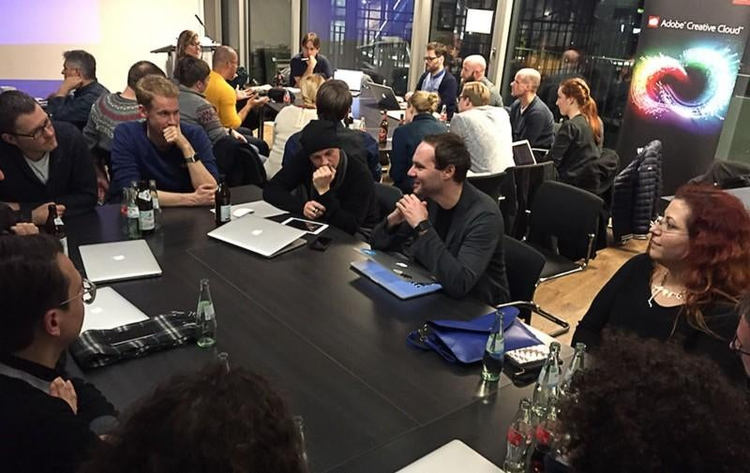
There’s an interesting framework developed by Sakichi Toyoda that was used within Toyota during the evolution of its manufacturing methodologies. It states that if you ask “Why?” 5 times, you can get to the root of any problem. It’s as if you’re a curious kid who is eagerly interested in learning why things are the way they are.
A good strategy to execute interviews is to establish rapport, a strong connection with the interviewee, instead of influencing the answers. Never ask, “This is good, right?” Instead, ask, “What do you think of this?” Even better, “Tell me a story where you had a challenge when working with X.” Seeking stories is a very powerful technique that can give you a lot of valuable information. For instance, if you need to understand what’s trending with teenagers, try asking them what they would buy with $150.
Telling and seeking stories during interviews is a good way to establish rapport and connection. A recent Human Tech podcast presented a research study that measured brain activity during storytelling. The research showed that during the climax of a story the listener’s brain activity is closely similar to the storyteller’s brain activity—creating almost like a real connection between the two.
https://blog.adobe.com/media_007073e41322173b79861c83dc8ce0b8904617b8.gif
When you ask a question, give your user the time they need to think. Silence is okay! Even if it’s awkward, never interrupt or influence the interviewee.
The Design Thinking process recommends quality over quantity in general. This means fewer people in your interviews, but selecting people that you think can represent different audiences of your product or service. We’re looking for insights, not truths.
I see insight as a deep view understanding of something. It’s as if your neurons are waiting for you to identify and activate the different parts of information that when connected, make sense. It’s your “aha” moment.
The concept of extreme users can also benefit your research. For instance, if you need to interview shopping cart users, also interview a homeless man who uses the cart as a vehicle to move his stuff around or collect recyclables —an extreme user. It will give you important insights.
https://blog.adobe.com/media_d471405b99ca1c9a57d99a3d5a8a5d0eb6cbf597.gif
2) Observation
Give your user a task and just watch. If you ask, “Do you have issues buying things from Amazon?”, you will probably hear, “No, it’s very easy to buy things there.” But if you watch a person using it from behind their shoulders, you will see pain points along the way.
Recently at Adobe, we ran our first internal Adobe XD experience-athon, where we gave Adobe designers a task and just watched. Product engineers and designers on the XD team attended. Very quickly, we identified multiple discoverability issues that need better on-boarding, and we’re already working on solving those issues.
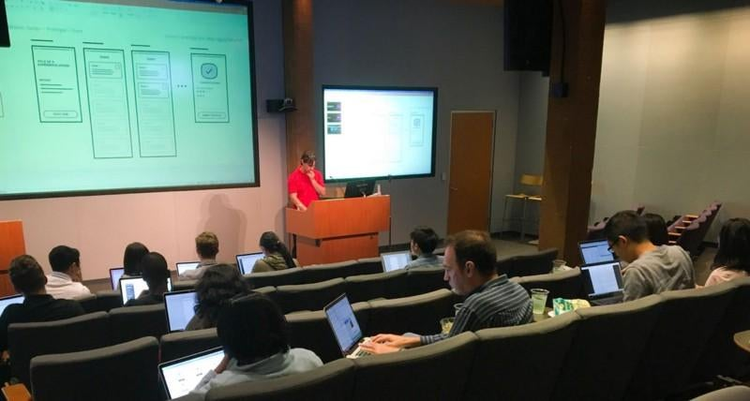
We believe it’s important that members from different areas on the Adobe XD team (design, engineering and product management) are exposed to feedback from our customers online (UserVoice and Twitter), at conferences, meetups, and customer meetings so that all facets of our product address customer challenges.
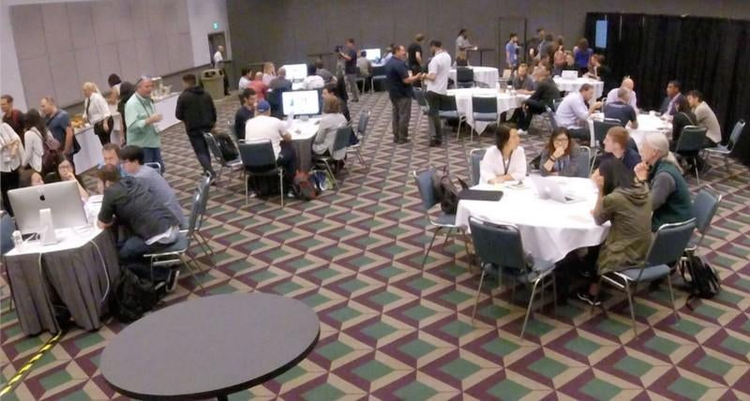
3) Experience
Use what your customer uses. It can be your own product, or it can be a competitor’s. This will give you direct access to the pain points and feelings of enjoyment your users experience.
I test all the design and prototyping tools that I can. Not only to build new mental models, but also to identify, as an anthropologist, whether a user suggesting a feature is being directly influenced by an existing tool or service. Adopting new mindsets and avoiding existing mental models are probably one of the hardest things to do!
Interesting Fact: designers and product managers at Adobe use Adobe XD to design Adobe XD-it’s app-ception! This also gives us the opportunity to feel what our users feel.
During the Empathy Phase, you can use some powerful tools, such as Empathy Maps, where you can list what personas say + do (explicit) and think + feel (implicit).
https://blog.adobe.com/media_92d2786cc43ea9ebbedc426f93e3ab9b34885337.gif
After unpacking the data from interviews, observations, and/or experiences, you can separate the explicit needs (say and do) from the implicit needs (think and feel). The latter is where you can find the insights.
Phase Two: Define
After building empathy, it’s time to revisit the initial design challenge and re-define the problem.
To define, or re-define, the problem or challenge, a point of view (PoV) formula can help: PoV = persona + need + insight
For example:
“Sam, a senior designer who loves to delight users with designs that solve real problems and look nice, needs to design, prototype and validate faster, because he feels he’s wasting too much time on repetitive steps. The whole jumping from tool to tool thing sucks!”
Needs are emotions and depth. Insights are surprises, interview findings, observations, contradictions, and can be used in the solution.
When you use this human-centered approach of searching for a real need, you have a competitive advantage.
I love the phrase, “Design Thinking is more need finding than problem solving.” So, be a need finder!
After we went through the empathy process for Adobe XD, we identified a couple of important things:
- When Photoshop and Illustrator were originally created, designers did not face the same UX challenges that they face today.
- There are different tools tackling different parts of the problem. There are tools for low fidelity design (information architecture and wireframes), tools for high fidelity design, and separate tools for prototyping, etc. Users have to jump from tool to tool in order to design, prototype, and validate.
- There’s a lot of friction in the process, especially after testing a prototype, when changes are necessary. And friction limits creativity. We saw that designers are fast paced and like to explore different options, iterate and move fast.
- Most of the tools used by designers suffer from scope creep, build features on top of features, don’t maintain a holistic view, are buggy and sometimes slow.
So very easily, we were able to define some of the XD pillars:
- Design at the speed of thought
- Performance and quality
- Meaningful workflows
- Contextual interface
With that in mind, we started what would become Adobe Experience Design, or as we simply call it, Adobe XD.
Phase Three: Ideate
After building empathy and re-defining the challenge, problem or need, it’s time to put our brains to work.
In my opinion, ideation is the best part of the process because it’s fun and exciting.
The Ideation Phase has two clear sections:
1. Diverge (Create Choices)
The same multidisciplinary team who built empathy and re-defined the problem, gets together during a pre-specified time frame to “vomit” ideas without any judgment! Why? Because by focusing on quantity we quickly leave obvious solutions behind and enter the unknown where true innovation can be found. To accomplish this, follow the rules of brainstorming:
- Defer judgment
- Go for quantity
- One conversation at a time
- Be visual
- Build on top of other ideas (“Yes, and…”)
- Stay on topic
- Encourage crazy ideas
During all the Design Thinking sessions I’ve run, teams were able to come up with over 100 ideas in just an hour.
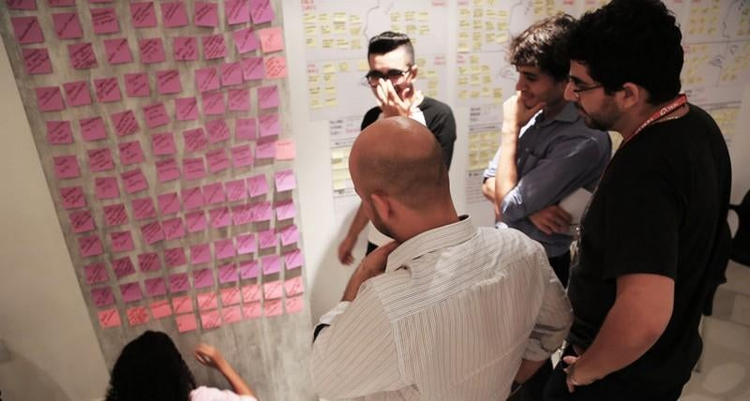
2. Converge (Make Choices)
With a ton of ideas to choose from, the team gets to select which they will work on. A good technique is voting with stickers: each team member gets a set of stickers and individually each team member marks the ideas they would like to work on. After this process is complete, it’s easy to democratically select the top ideas.
It’s important to have these two clear and separate phases: 1 hour for brainstorming (diverge) and 1 hour for making choices (converge).
Phase Four: Prototype
Let’s build to think and to feel. A prototype transforms an idea into something tangible and “experiment-able”.
“A prototype is worth a thousand meetings”, is a saying at IDEO.
There are three stages in this phase:
- Inspiring — “What could it be?”
- Evolving — “What should it be?”
- Validating — “What will it be?”
https://blog.adobe.com/media_921a3fae0d4fe70e48f0dea4c124a36b78fd90d6.gif
A prototype is an amazing tool to help you fail fast to learn fast. It’s a lot cheaper to fail early (during the initial stages of a project) than later, after lots of resources are allocated and working on executing tasks. We build prototypes to learn, solve conflicting ideas, start conversations and manage the building process.
Scrolling, symbols, layers, libraries, are some examples of prototypes we have created to test, validate and learn fast.
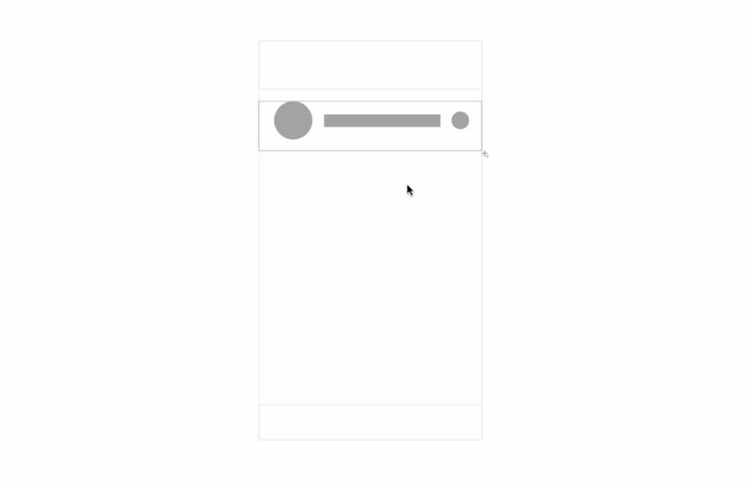
Phase Five: Test
When prototypes are created, test them with real people. We test to refine prototypes and solutions, to learn more about the user, and to test and refine our PoV.
When testing, let users play with your prototypes, watch and listen. If small tweaks are easy to make, do them and test again. Get close to your users and most importantly, never fall in love with your ideas.
A good example with Adobe XD is the story around layers. Initially, we assumed that we could offer a new mental model where layers were not present. Some loved it and some hated it. Interestingly, after we shipped XD without layers, some people started to realize they didn’t need layers after all. But after more investigations and tests with the community and customers, we concluded that layers can help, especially for exporting, symbols and access to objects in complex compositions.
As a result, we’ll be shipping layers in Adobe XD later in 2016. And we think we made them smarter, following a concept we named “Local Layers”. But at the end of the day, customers will tell us if we got it right, or not, and we’ll learn, iterate and pivot.
Analytics can also help—they give you the WHAT, but not the WHY. They are very useful to validate different approaches. We have a very talented group doing analytics for Adobe XD, but instead of just collecting numbers, they always start with a question, for example: “Are people succeeding in Design Mode? Success being, for instance, customers using the repeat grid tool with images dragged from Finder.” After looking at the numbers, if users are not successful, we make changes to the on-boarding process, or to the tool itself, and test again. Always try to answer the initial question.
On top of analytics, for quantitative research and testing, we run a private prerelease program with approximately 800 designers. For qualitative research and testing, besides customer meetings, we have a Customer Advisory Board (CAB), with 38 designers from companies such as Google, Facebook, Airbnb, IDEO, Citi, NFL, EFM, LinkedIn, and of course, a couple of extreme users, such as students, plugin developers and designers from small agencies. We interact with CAB members constantly via Slack and 1:1s, testing very early prototypes and collecting direct feedback.
To stay in the loop, when testing is complete go back to one of the previous phases and keep iterating, one phase at a time.
And never forget: trust the process and have fun!
In Conclusion
Design Thinking is a method or process that starts with a design challenge, moves to the empathy phase (interviews, observation or experience), then to definition (or re-definition) of a problem or challenge, embraces ideation (diverge first and converge later), uses prototypes (build to think and learn fast) and continues with testing.
For Adobe XD, we believe if we keep listening, thinking, creating, validating, learning, and always being open and transparent that we’ll end up with the right amount of customer value and we’ll create a solution that designers love.
Thanks for reading and stay in touch on Twitter (if you tweet with #AdobeXD, the whole team can see it), Facebook, features requests and bugs and public forums.